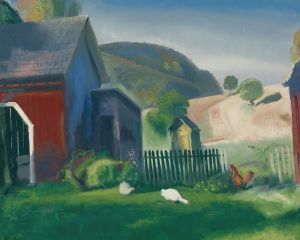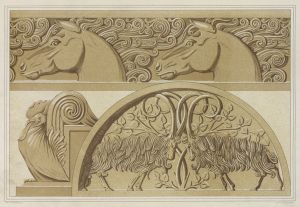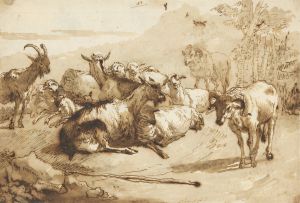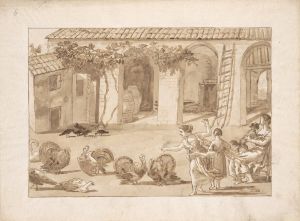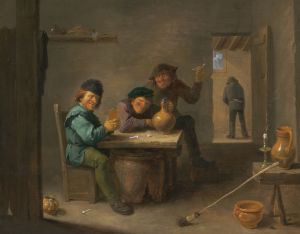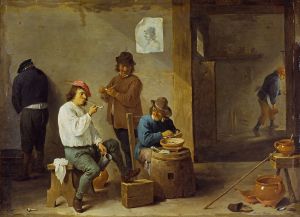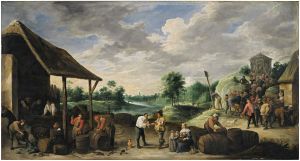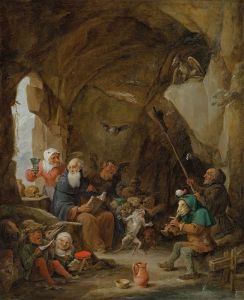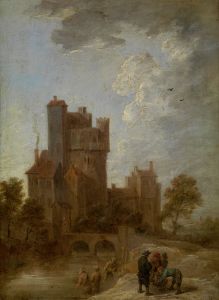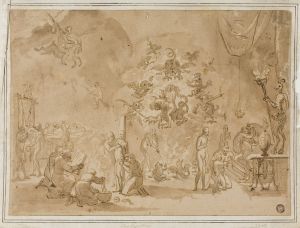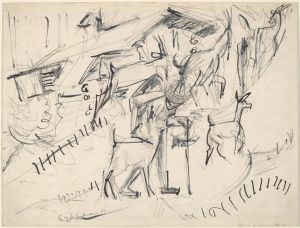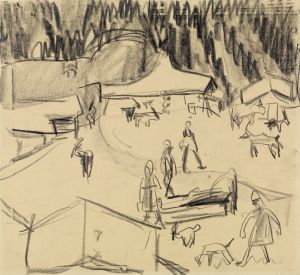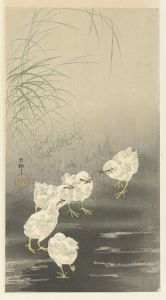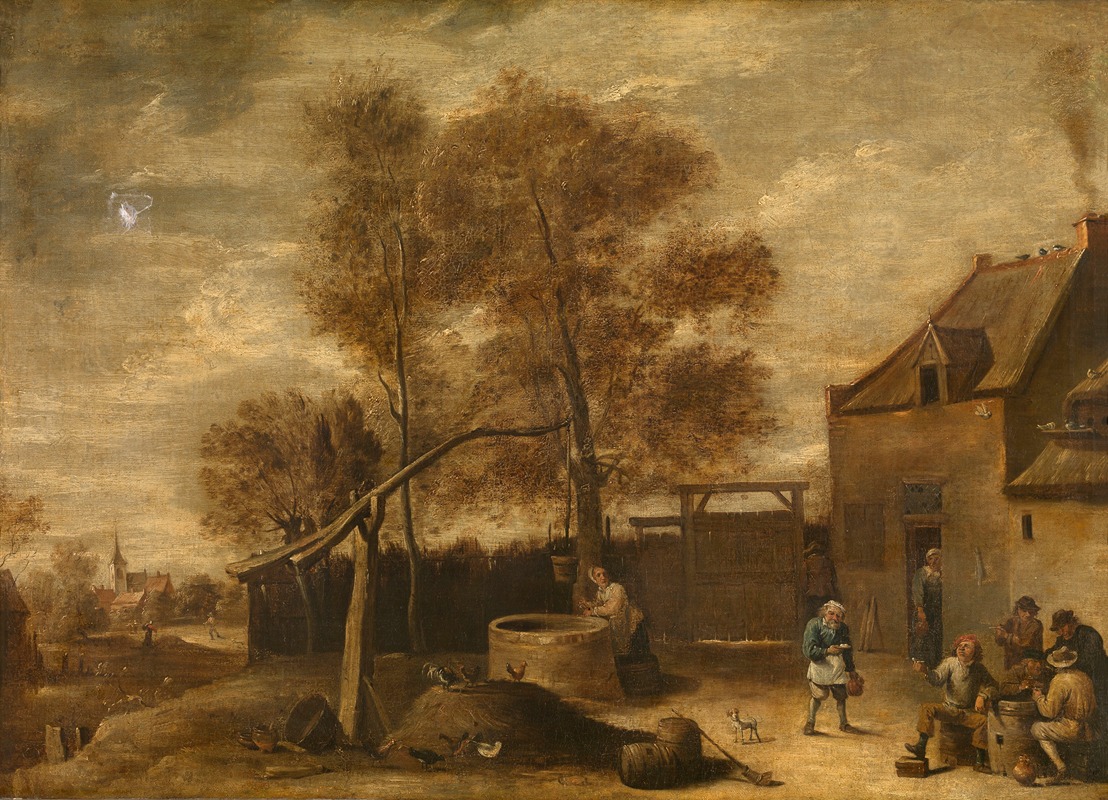
In the Farmyard
A hand-painted replica of David Teniers The Younger’s masterpiece In the Farmyard, meticulously crafted by professional artists to capture the true essence of the original. Each piece is created with museum-quality canvas and rare mineral pigments, carefully painted by experienced artists with delicate brushstrokes and rich, layered colors to perfectly recreate the texture of the original artwork. Unlike machine-printed reproductions, this hand-painted version brings the painting to life, infused with the artist’s emotions and skill in every stroke. Whether for personal collection or home decoration, it instantly elevates the artistic atmosphere of any space.
David Teniers the Younger (1610–1690) was a prominent Flemish Baroque painter known for his genre scenes, landscapes, and depictions of peasant life. "In the Farmyard" is one of his works that exemplifies his skill in portraying rural settings with meticulous detail and a sense of everyday life.
The painting depicts a typical farmyard scene, featuring peasants engaged in daily activities amidst a rustic backdrop. Teniers was renowned for his ability to capture the textures of rural life, from the weathered wood of farm buildings to the earthy tones of the landscape. His works often included animals, tools, and other elements that added authenticity to his depictions of peasant life. In "In the Farmyard," these elements are likely present, showcasing his attention to detail and his interest in the lives of ordinary people.
Teniers was heavily influenced by the works of Pieter Bruegel the Elder, whose focus on peasant life and rural scenes shaped much of the Flemish tradition. Like Bruegel, Teniers infused his paintings with a sense of narrative, often including small vignettes of human activity that invite the viewer to explore the composition in detail. His use of light and color further enhances the naturalistic quality of his work, creating a warm and inviting atmosphere.
The exact date of creation for "In the Farmyard" is not definitively documented, but it is consistent with Teniers' broader body of work, which spanned several decades in the mid-17th century. During this period, Teniers enjoyed considerable success and was appointed court painter to Archduke Leopold Wilhelm of Austria, a significant patron of the arts. This position allowed him access to a wide range of artistic influences and resources, which likely contributed to the refinement of his technique.
While "In the Farmyard" is not as widely discussed as some of Teniers' other works, it remains an example of his ability to elevate scenes of everyday life into art that is both engaging and enduring. The painting reflects the broader cultural and artistic trends of the Flemish Baroque period, emphasizing realism, detail, and a connection to the natural world.
As with many of Teniers' works, "In the Farmyard" continues to be appreciated for its craftsmanship and its insight into 17th-century rural life. It serves as a testament to Teniers' skill as an observer and chronicler of his time.





